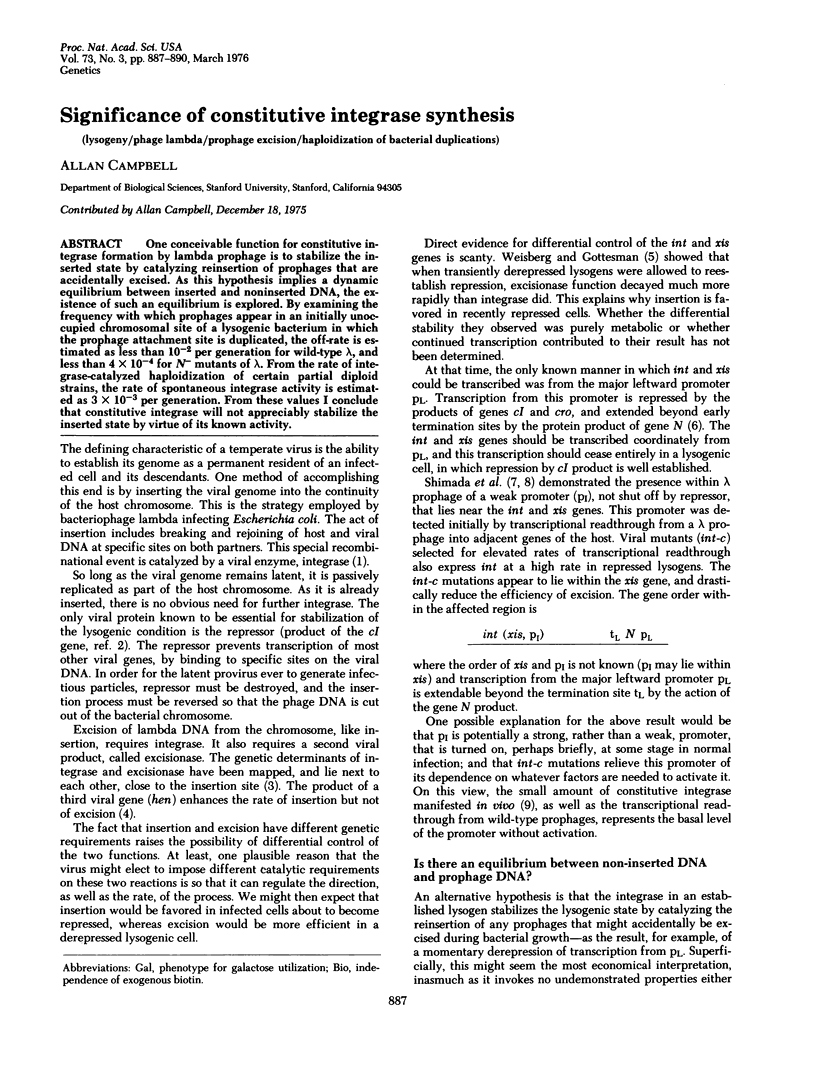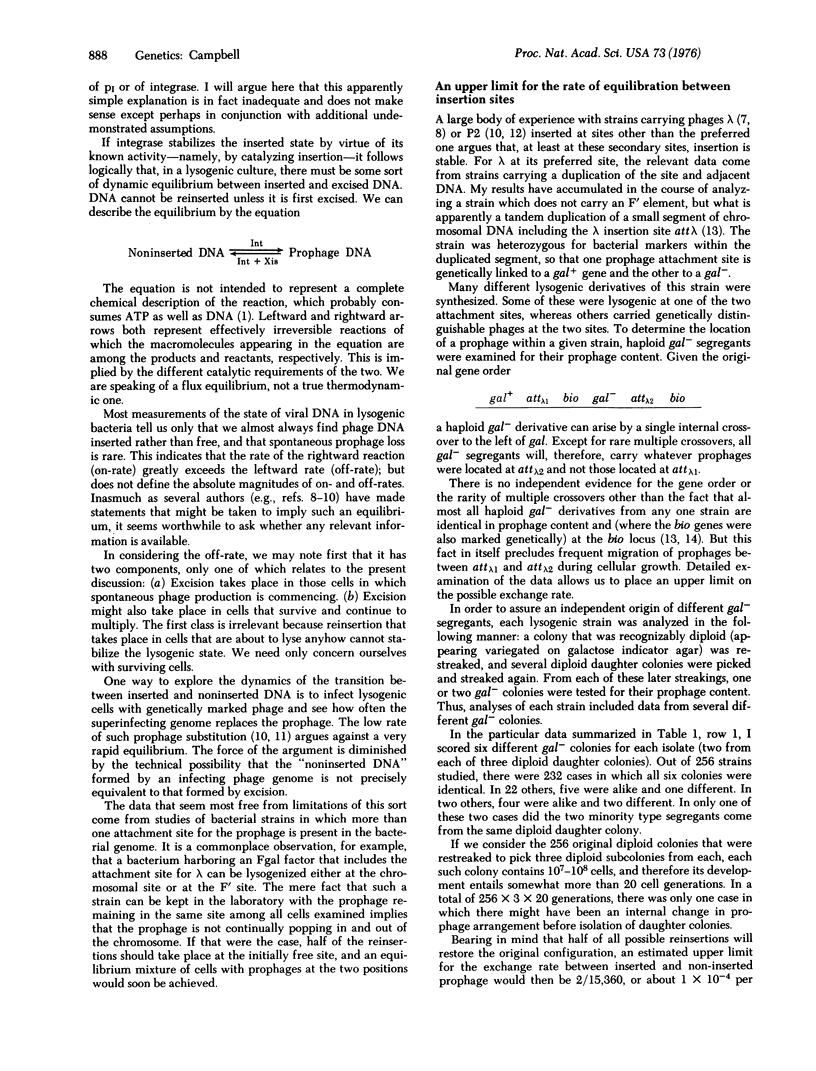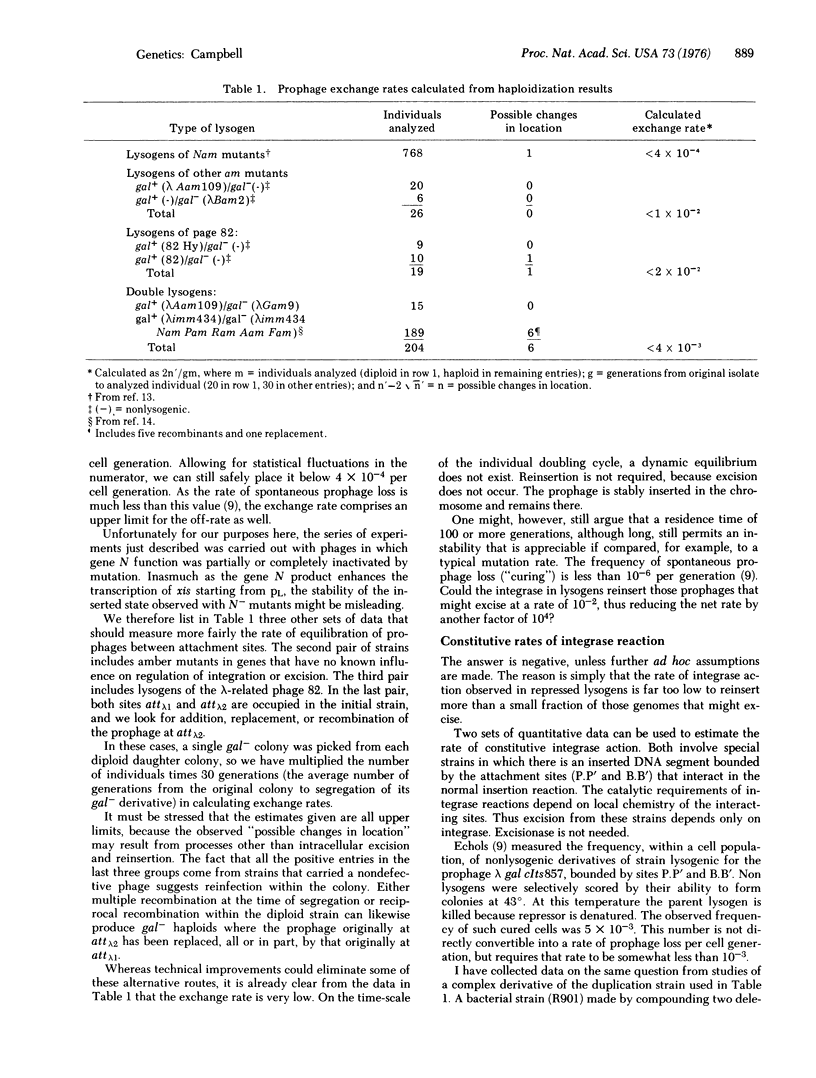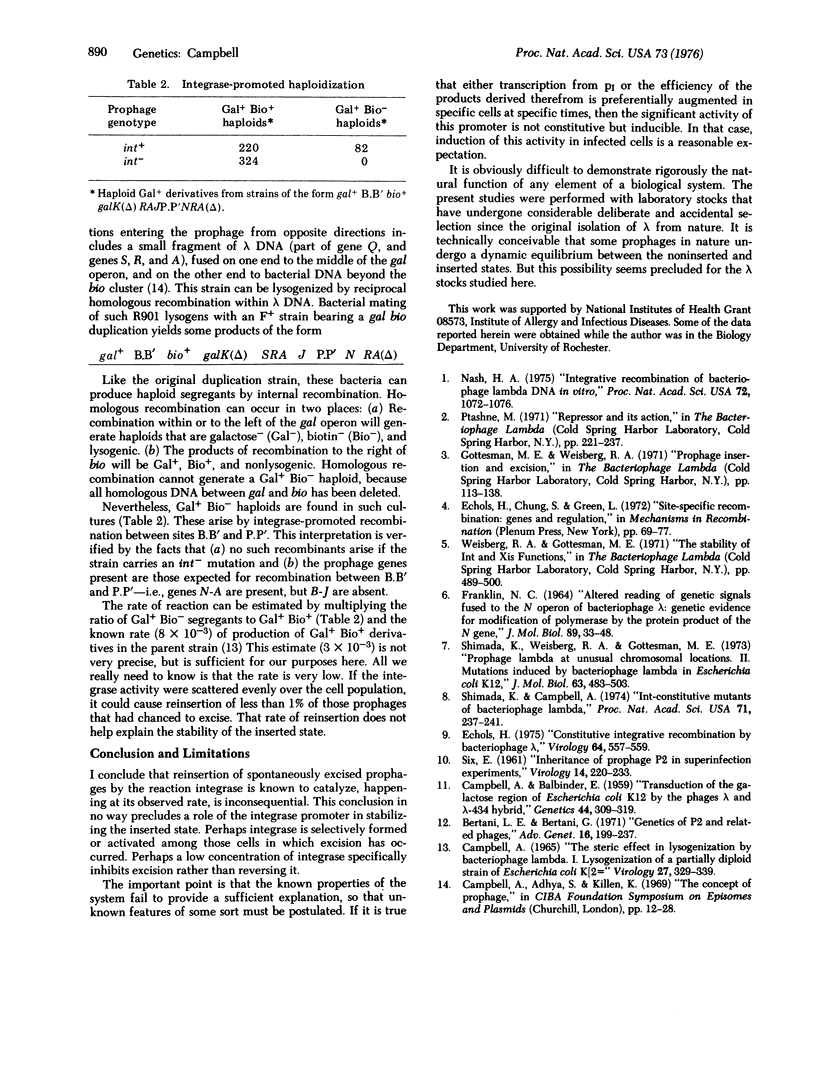Abstract
One conceivable function for constitutive integrase formation by lambda prophage is to stabilize the inserted state by catalyzing reinsertion of prophages that are accidentally excised. As this hypothesis implies a dynamic equilibrium betwen inserted and noninserted DNA, the existence of such an equilibrium is explored. By examining the frequency with which prophages appear in an initially unoccupied chromosomal site of a lysogenic bacterium in which the prophage attachment site is duplicated, the off-rate is estimated as less than 10(-2) per generation for wild-type lambda, and less than 4 x 10(-4) for N- mutants of lambda. From the rate of integrase-catalyzed haploidization of certain partial diploid strains, the rate of spontaneous integrase activity is estimated as 3 x 10(-3) per generation. From these values I conclude that constitutive integrase will not appreciably stabilize the inserted state by virtue of its known activity.
Full text
PDF



Selected References
These references are in PubMed. This may not be the complete list of references from this article.
- Bertani L. E., Bertani G. Genetics of P2 and related phages. Adv Genet. 1971;16:199–237. doi: 10.1016/s0065-2660(08)60359-4. [DOI] [PubMed] [Google Scholar]
- Campbell A. The steric effect in lysogenization by bacteriophage lambda. I. Lysogenization of a partially diploid strain of Escherichia coli K-12. Virology. 1965 Nov;27(3):329–339. doi: 10.1016/0042-6822(65)90112-1. [DOI] [PubMed] [Google Scholar]
- Campbell A, Balbinder E. Transduction of the Galactose Region of Escherichia Coli K12 by the Phages lambda and lambda-434 Hybrid. Genetics. 1959 May;44(3):309–319. doi: 10.1093/genetics/44.3.309. [DOI] [PMC free article] [PubMed] [Google Scholar]
- Echols H. Constitutive integrative recombination by bacteriophage lambda. Virology. 1975 Apr;64(2):557–559. doi: 10.1016/0042-6822(75)90133-6. [DOI] [PubMed] [Google Scholar]
- Franklin N. C. Altered reading of genetic signals fused to the N operon of bacteriophage lambda: genetic evidence for modification of polymerase by the protein product of the N gene. J Mol Biol. 1974 Oct 15;89(1):33–48. doi: 10.1016/0022-2836(74)90161-2. [DOI] [PubMed] [Google Scholar]
- Nash H. A. Integrative recombination of bacteriophage lambda DNA in vitro. Proc Natl Acad Sci U S A. 1975 Mar;72(3):1072–1076. doi: 10.1073/pnas.72.3.1072. [DOI] [PMC free article] [PubMed] [Google Scholar]
- Shimada K., Campbell A. Int-constitutive mutants of bacteriophage lambda. Proc Natl Acad Sci U S A. 1974 Jan;71(1):237–241. doi: 10.1073/pnas.71.1.237. [DOI] [PMC free article] [PubMed] [Google Scholar]
- Shimada K., Weisberg R. A., Gottesman M. E. Prophage lambda at unusual chromosomal locations. I. Location of the secondary attachment sites and the properties of the lysogens. J Mol Biol. 1972 Feb 14;63(3):483–503. doi: 10.1016/0022-2836(72)90443-3. [DOI] [PubMed] [Google Scholar]


